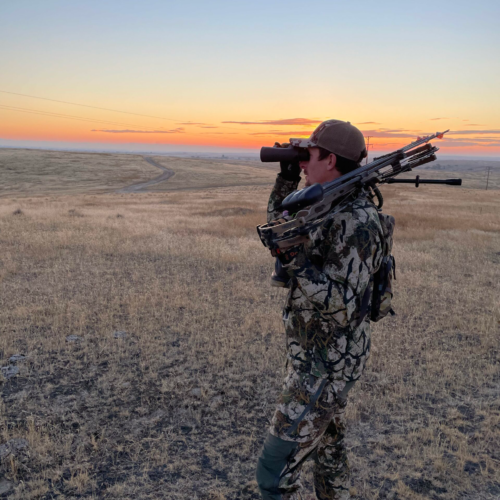Crucial Deer Hunting Safety Guidelines
Deer hunting can be an exciting and rewarding experience, but it’s essential to prioritize safety while enjoying this outdoor activity. In this comprehensive guide, we’ll cover crucial deer hunting safety guidelines that every hunter should follow, from firearm safety to hunting etiquette and beyond. By adhering to these recommendations, you can help ensure a safe and successful hunting experience for yourself and those around you.
Firearm Safety
Firearm safety is one of the most critical aspects of hunting safety. Keep these essential tips in mind when handling firearms:
- Always treat firearms as if they’re loaded: Regardless of whether a firearm is loaded or not, treat it with the same respect and caution. Keep the muzzle pointed in a safe direction at all times.
- Keep your finger off the trigger until you’re ready to shoot: Your finger should rest outside the trigger guard until you’ve made the decision to fire. This will help prevent accidental discharges.
- Know your target and what’s beyond it: Always be sure of your target, and be aware of what’s behind it before pulling the trigger. Taking an errant shot can lead to dangerous situations and unintended consequences.
- Store firearms securely: When not in use, store firearms unloaded and locked away from children and unauthorized users. Use a gun safe or other secure storage solution.
Tree Stand Safety
Tree stands are a popular tool for deer hunters, but they can pose a risk if not used properly. Follow these guidelines for safe tree stand use:
- Inspect your tree stand and equipment before each use: Check for signs of wear, damage, or rust on your tree stand, safety harness, and other equipment. Replace any damaged components before hunting.
- Always use a safety harness: A full-body safety harness can help prevent falls and serious injuries. Wear it at all times while climbing and sitting in your tree stand.
- Choose a sturdy tree: Select a healthy, living tree that can support your weight and the stand’s weight. Avoid dead or rotting trees, as they may not be strong enough to hold you securely.
- Use a haul line: When climbing into and out of your tree stand, use a haul line to raise and lower your unloaded firearm, bow, or other hunting equipment. This prevents the risk of dropping items while climbing.
- Let someone know your location: Inform a friend or family member of your hunting location and planned return time. If an accident occurs, they’ll know where to find you.
Hunting Etiquette and Communication
Good communication and etiquette are crucial for ensuring a safe and enjoyable hunting experience for everyone involved. Here are some tips to help maintain a respectful and responsible atmosphere while hunting:
- Respect property boundaries: Always obtain permission from landowners before hunting on private property. Never trespass or disregard posted signs, as this can lead to dangerous situations and legal trouble.
- Follow local hunting regulations: Adhere to all rules and regulations in your hunting area, including bag limits, legal hunting hours, and required permits. This not only promotes safety but also helps maintain a sustainable deer population.
- Communicate with fellow hunters: Let other hunters in your area know your presence by wearing blaze orange clothing and using hand signals or verbal communication when necessary. This helps prevent accidents and misunderstandings.
- Practice ethical hunting: Only take shots you are confident in making and aim for a quick, humane kill. If you wound an animal, make every effort to track and recover it.
- Leave no trace: Clean up after yourself by picking up spent cartridges, trash, and other debris. Leave your hunting area in the same or better condition than you found it.
First Aid and Emergency Preparedness
Being prepared for emergencies and knowing basic first aid can make all the difference in a hunting situation. Here are some essential safety precautions:
- Carry a well-stocked first aid kit: Include items like bandages, gauze, antiseptic wipes, tweezers, and pain relievers. Familiarize yourself with the contents and know how to use them.
- Learn basic first aid skills: Take a first aid course or read up on essential skills like how to treat cuts, scrapes, sprains, and fractures. Knowing how to respond in an emergency can save lives.
- Carry a means of communication: Bring a cell phone or two-way radio to call for help if needed. However, remember that cell reception can be spotty in remote areas, so have a backup plan in place.
- Know the signs of hypothermia and heatstroke: Exposure to extreme temperatures can be dangerous. Learn the symptoms of hypothermia and heatstroke, and know how to respond if you or a fellow hunter experiences these conditions.
Conclusion
Deer hunting can be a thrilling and rewarding pastime, but it’s crucial to follow essential safety guidelines to ensure a successful and enjoyable experience. By following these tips on firearm safety, tree stand usage, hunting etiquette, communication, and emergency preparedness, you can help protect yourself and those around you. So gear up, stay safe, and happy hunting!





 The Significance of Physical Fitness in Deer Hunting Success
The Significance of Physical Fitness in Deer Hunting Success